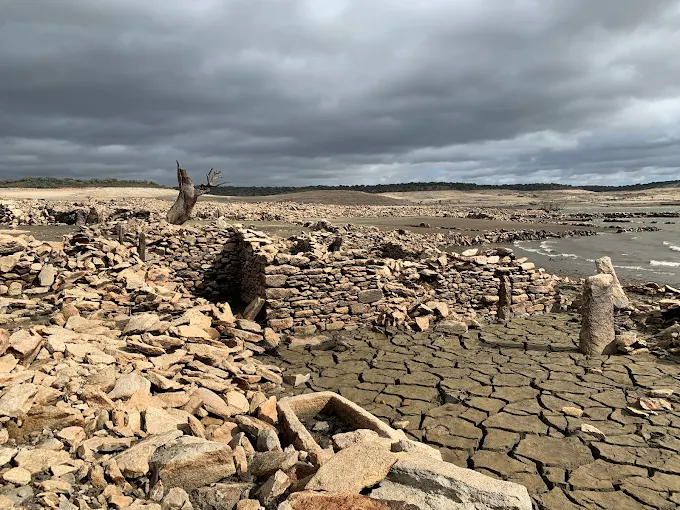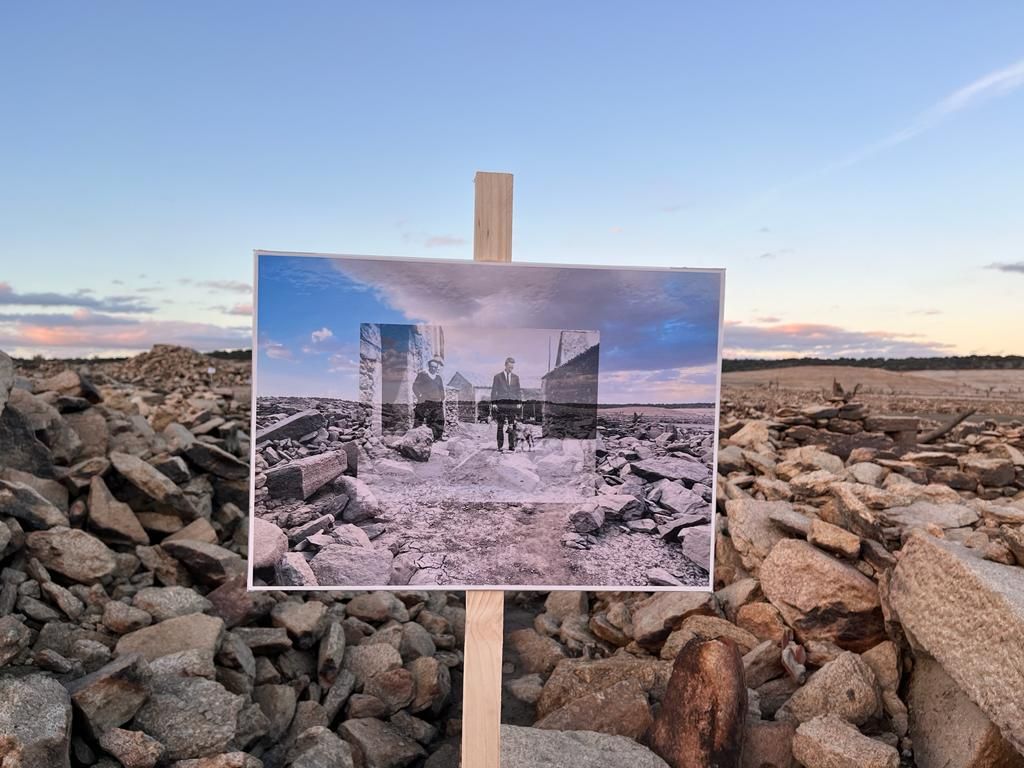The ruins of Argusino
Discover the history of Argusino, the village in Zamora that disappeared beneath the Almendra reservoir. Very close to Fermoselle and the Arribes del Duero, this is a visit that combines nature, memory and emotion.
Very close to the imposing landscape of the Arribes del Duero, where the cliffs merge with the silence of the river, lies a secret that only emerges occasionally: the ruins of Argusino. This village in Zamora, swallowed up by the waters of the Almendra reservoir in the 1960s, has a story that deserves to be told. When drought lowers the water level, its stones come back into view, as if to remind us of what once was.
In this article, we invite you to discover not only the history of a submerged village, but also a different kind of travel experience: nature, memory and authenticity in the heart of the Arribes del Duero.
The history of Argusino: a village between centuries
Humble origins
Argusino was a small village in the province of Zamora, located in the Sayago region, with deep rural roots. Its inhabitants lived off agriculture, livestock farming and community life for generations.
The Almendra reservoir and the disappearance
In the 1960s, hydroelectric development sealed Argusino's fate. The construction of the Almendra reservoir (one of the largest in Spain) led to the expropriation and evacuation of the village. In 1967, the water finally covered its streets, houses and churches. The families were relocated and, although they were compensated, many felt they had lost something irreplaceable: their home and their roots.
What remains today
Since then, Argusino only “appears” during periods of severe drought, when the level of the reservoir drops enough to reveal its remains. It is at these moments that history comes back to life: walls, remains of houses, the structure of the church... A moving sight, where stone resists oblivion.
Where are the ruins and how to get there
The ruins of Argusino are not signposted as an official tourist destination, but you can visit them if you know when and how.
Location
The ancient site is located next to the Almendra reservoir, in the province of Zamora, near the border with Salamanca. From Fermoselle, one of the most beautiful villages in the Arribes del Duero, access is easy and only a 25-minute drive away.
Seasonal accessibility
The ruins are only visible during prolonged droughts or when the reservoir is at low levels (usually in summer). It is advisable to check the current conditions in advance.
Important tips
- The ruins are not always visible. They depend on the level of the reservoir.
- The terrain can be uneven and is not marked as an official route. Caution and respect for the environment are recommended.
Suggested route: starting from Fermoselle
For those who want to make this visit part of a broader experience, we suggest a combined route that brings together nature, history and gastronomy:
Suggested itinerary
- Start at the Posada Doña Urraca (Fermoselle) A perfect place to have an energising breakfast before setting off on the route and taking a stroll through its cobbled streets.
- Visit to the Mirador del Fraile Impressive views over the Duero canyons. Ideal for photographs.
- Detour to the Almendra reservoir and search for the ruins of Argusino If the water level allows it, you will be able to see the structures that have emerged.
- Return through the villages in the area: Fornillos, Pinilla or Villar del Buey Small villages that preserve the rural soul of Sayago.
- End in Fermoselle: Dinner and rest at the Posada Doña Urraca Local cuisine, wine from Arribes and good conversation to end the day.
Suggested stops
- San Lorenzo Bridge.
- Ambasaguas viewpoint.
- Las Escaleras viewpoint.
Multimedia gallery
Current images: Photographs of the ruins that have emerged in recent summers.

Ruins of some houses in Argusino. Sergio Picazo via Google Maps

Ruins of some houses in Argusino. Mateos Moralejo a través de Google Maps

Ruins of some houses in Argusino.Cristina Benítez a través de Google Maps
Historical photos: Argusino archive before its disappearance.

Historical image of Argusino. Adrian Mateos Moralejo via Google Maps

Rebuilding Argusino initiative. Irene Gómez via La Opinión de Zamora
Testimonies and living memory
‘My grandmother was born in Argusino. Every time I go back and see those stones sticking out of the water, I feel like she's still there.’ — Carmen, granddaughter of former residents.
‘My grandmother told me that from her house you could hear the bells ringing... And that on the day they left, they looked back one last time, not knowing if they would ever see their church again.’ — Testimony of a descendant of Argusino
In recent years, some associations have promoted events to pay tribute to and recover the memory of Argusino, with exhibitions, documentaries, the collection of testimonies and family gatherings.
Tips for travellers
- Best time to visit: Late summer or dry autumns, when the reservoir is low either due to the opening of the dam or prolonged droughts..
- Precautions: This is not a signposted area, nor is the terrain even. Wear suitable footwear.
- Respect: This is a place steeped in history. Avoid disturbing the environment or taking away ‘souvenirs’.
Conclusion: Argusino, the story that refuses to sink
Argusino is not just a vanished village. It is a symbol of a collective memory that, like the stones emerging from the reservoir, resists oblivion. For those who visit the Arribes del Duero in search of nature, culture and truth, this corner offers a unique experience: the chance to walk on memory.
From the Posada Doña Urraca, just a few kilometres away, you can turn your getaway into something more than just a trip: a tribute. Because getting to know Argusino is also honouring those who lived, loved and lost their homes... and still remember them today.

